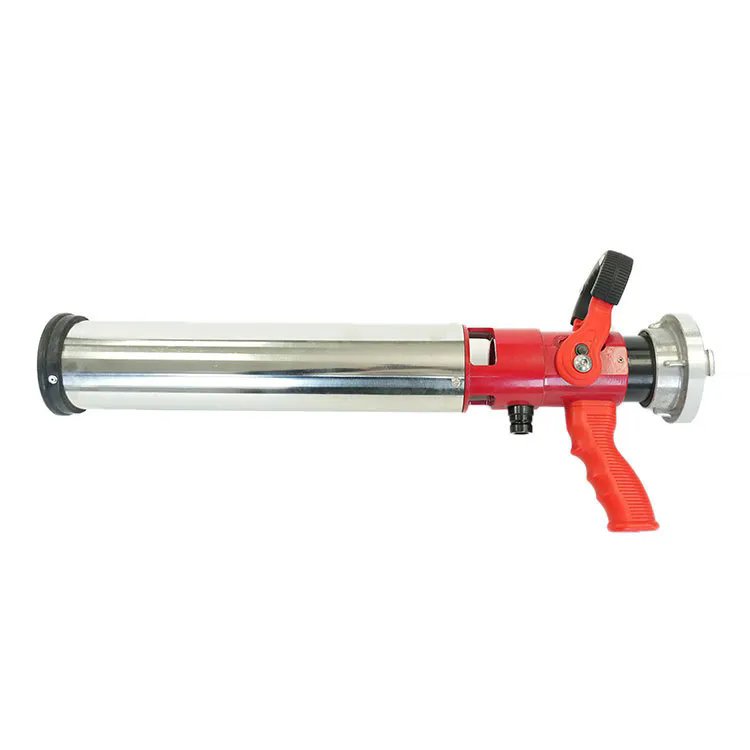What Makes the Self-Induction Foam Fire Nozzle an Essential Tool for Firefighting?
2024-11-06
In the realm of firefighting, effective tools can mean the difference between life and death, safety and disaster. One such tool that has garnered attention in recent years is the self-induction foam fire nozzle. But what is it about this innovative nozzle that makes it essential for modern firefighting efforts? Let’s delve into the benefits and applications of the self-induction foam fire nozzle and explore why it’s becoming a staple in fire safety equipment.
1. How Does the Self-Induction Foam Fire Nozzle Work?
At its core, the self-induction foam fire nozzle operates by drawing in foam concentrate and mixing it with water as it is deployed. This self-induction feature allows the nozzle to generate a foam solution without the need for additional pumps or equipment. The result is a highly effective firefighting tool that produces a thick, stable foam that can smother fires, especially those involving flammable liquids.
2. Why Is Foam Effective Against Certain Types of Fires?
Foam fire nozzles are particularly effective against Class B fires, which involve flammable liquids like gasoline, oil, and solvents. The foam forms a barrier that prevents oxygen from reaching the fire, effectively suffocating it. This unique property makes foam an indispensable resource in firefighting, especially in industrial settings where such hazards are prevalent.
3. What Advantages Does the Self-Induction Feature Offer?
The self-induction feature of these nozzles presents several advantages. First and foremost, it simplifies the firefighting process by eliminating the need for external foam proportioning systems. This not only reduces equipment costs but also minimizes setup time in emergency situations. Firefighters can quickly deploy the nozzle, focusing on controlling the fire rather than fumbling with complex equipment.
4. How Does the Self-Induction Foam Fire Nozzle Enhance Safety?
Safety is a top priority in firefighting, and the self-induction foam fire nozzle contributes to this in multiple ways. The foam generated by the nozzle helps to cool the fire and surrounding surfaces, reducing the risk of re-ignition. Additionally, the effective suppression of flammable liquid fires can prevent dangerous explosions, protecting both firefighters and bystanders in the vicinity.
5. What Are the Applications of Self-Induction Foam Fire Nozzles?
Self-induction foam fire nozzles are versatile tools that can be used in various settings. They are commonly found in industrial facilities, airports, marine environments, and anywhere flammable liquids are stored or handled. Their ability to produce high-quality foam quickly makes them ideal for emergency response situations, where time is of the essence.
6. How Do Self-Induction Foam Fire Nozzles Compare to Traditional Nozzles?
When compared to traditional water-based firefighting nozzles, self-induction foam fire nozzles offer enhanced fire suppression capabilities. While standard nozzles can be effective for certain types of fires, they may struggle with flammable liquids. Foam nozzles, with their ability to create a protective barrier, provide a more effective solution in these scenarios, leading to quicker and safer fire control.
7. What Should Fire Departments Consider When Selecting Foam Fire Nozzles?
Fire departments looking to invest in self-induction foam fire nozzles should consider several factors. Compatibility with existing foam concentrates, flow rates, and nozzle design are critical aspects to evaluate. Additionally, ease of use and maintenance should be prioritized to ensure that firefighters can operate the equipment efficiently under pressure.
8. How Do Training and Familiarization Impact the Effectiveness of Foam Nozzles?
Training is essential for maximizing the effectiveness of any firefighting tool, including self-induction foam fire nozzles. Firefighters must be familiar with the nozzle’s operation, including how to adjust the foam ratio and apply the foam effectively in different situations. Regular drills and training sessions can help ensure that personnel are prepared to use these nozzles efficiently during real emergencies.
9. Can Self-Induction Foam Fire Nozzles Be Used in Combination with Other Firefighting Equipment?
Yes, self-induction foam fire nozzles can be effectively used alongside other firefighting equipment. For instance, they can be paired with fire hoses, portable tanks, and other suppression systems to create a comprehensive firefighting strategy. This integration enhances the overall effectiveness of fire suppression efforts, allowing for a multi-faceted approach to fire control.
10. Why Should You Consider Implementing Self-Induction Foam Fire Nozzles in Your Fire Safety Protocols?
Incorporating self-induction foam fire nozzles into your fire safety protocols offers numerous benefits, including improved efficiency, enhanced safety, and effective fire suppression capabilities. As industries continue to prioritize fire safety, investing in the right equipment is essential. The self-induction foam fire nozzle stands out as a valuable tool that can help protect lives and property, making it a critical addition to any firefighting arsenal.
Conclusion: Is the Self-Induction Foam Fire Nozzle the Future of Firefighting?
The self-induction foam fire nozzle represents a significant advancement in firefighting technology. Its ability to deliver effective fire suppression quickly and efficiently makes it an essential tool for modern fire departments and industries alike. As the need for effective fire safety measures grows, the importance of such innovative equipment cannot be overstated. If you’re looking to enhance your fire safety protocols, the self-induction foam fire nozzle may be the key to achieving greater protection and peace of mind.



